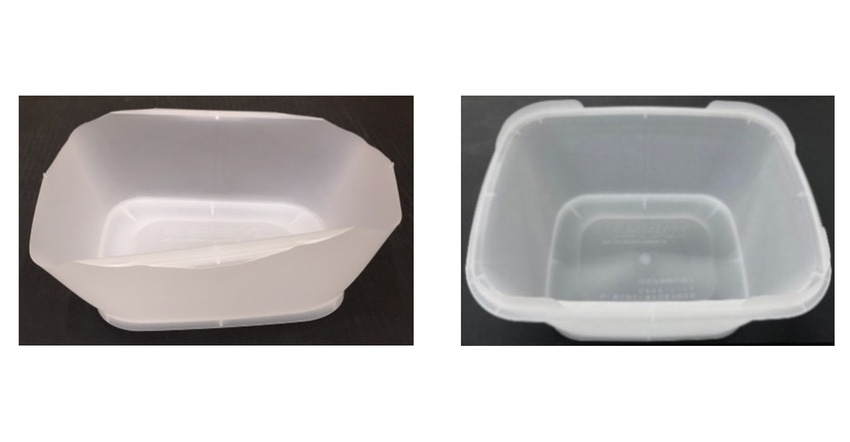Toppan’s Molding Process Rivals Thermoforming for Production of Ultra-Thin-Walled Containers
By combining supercritical fluid with its original molding technology, Toppan is able to achieve a 30% reduction in wall thickness without compromising strength.
March 9, 2021

Tokyo-based Toppan Printing has combined the use of a supercritical fluid — a substance at a temperature and pressure above its critical point that has both gas and liquid properties — with its original molding technology to develop an ultra-thin-walled container that is roughly 30% thinner than a conventional injection molded product.
The new container is part of Toppan’s Sustainable-Value Packaging lineup. Samples were made available in Japan starting Feb. 24 to manufacturers in the foods and toiletries sectors.
Ultra-thin-wall molding presents challenges in terms of cost, durability, and the feasibility of mass production, said Toppan. Thermoforming has generally been considered a better option for the production of thin-walled containers, but it does not offer the same design possibilities as injection molding, noted the company.
Toppan’s technology makes it possible to exceed the conventional limits of injection molding and form products with a reduced wall thickness akin to what can be achieved by thermoforming. The supercritical fluid is dissolved in molten resin to ensure that it efficiently reaches every corner of the injection mold, enabling the production of lighter containers with thinner walls.
The technology allows the wall thickness of injection molded products to be reduced by approximately 30%, from 0.5 to 0.35 mm. In addition to a reduction in plastics consumption, the process and also helps to lower CO2 emissions associated with resin manufacture.
By improving resin fluidity, the technology also enables the use of more eco-friendly plastics, such as biodegradable resins and biomass polyethylene, which are typically difficult to mold. The reduction in thickness does not compromise strength.
“This new technology enables the production of containers that offer all the benefits of conventional injection molding but with a reduced impact on the environment,” said Toshiaki Kakemura, General Manager of Plastic Development in Toppan’s Packaging Solutions business. “We will expand sales to manufacturers of food and toiletries and continue to drive sustainable solutions for society and growth for our customers’ businesses through the Toppan S-Value Packaging range.”
About the Author(s)
You May Also Like




